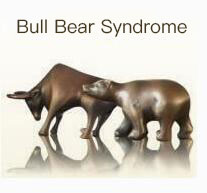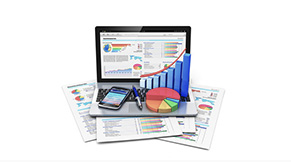
CBBC are a type of structured product that tracks the performance of an underlying asset without requiring investors to pay the full price required to own the actual asset. They are issued either as Bull or Bear contracts with a fixed expiry date, allowing investors to take bullish or bearish positions on the underlying asset. CBBC are issued by a third party, usually a securities firm, independent of HKEX and of the underlying asset.
CBBC& WARRANTS
The callable part is one of the key things that sets a CBBC apart from similar derivative products such as warrants. If the value of the underlying asset hits a predetermined call price, the bank that issued it gets to call the CBBC. That means the holder of the CBBC has to give it back to the issuer and the contract is over, the CBBC is gone.

Classification
Warrants are a popular investment product in Hong Kong.Warrants are an instrument which gives investors the right - but not the obligation - to buy or sell the underlying asset (e.g. a stock) at a pre-set price on or before a specified date. After all, warrants are complicated, high-risk instruments suitable only for those who are able to grasp the product features and take the risks. If in doubt, stay out.
Mutual Fund
A mutual fund is made up of a pool of money from many investors which an investment management firm invests into stocks, bonds or other financial assets. The collective financial strength of these investors makes it possible to make investments across sectors, industries and markets. When you invest in a mutual fund you own a proportion of every investment in it. Sometimes referred to as a unit trust, a mutual fund provides many benefits to investors, including greater diversification and professional investment expertise.
Equity Linked Notes
Equity Linked Products are fixed income debt securities that generally pay interest based on a fixed percentage of their initial issue price. They are an equity structured investment product that aims to offer a potentially higher return compared to traditional time deposits. Also they are notes that pay investors a high yield, against the risk of put option short on an underlying equity. They are an alternative to direct share investing and structured in the form of a zero coupon bond. Under volatile market conditions, the volatility of ELNs will be lower than the underlying stock. In a static market, ELNs may provide better yields than those achieved through cash deposits or direct investment in shares. There are different types of ELNs, namely, "Bull" ELN, "Bear" ELN and "Strangle" ELN. "Bull" ELN is the most popular type of ELN in the market. In times of market uncertainty ELNs can be a lower risk alternative to a direct share investment. In a static market they provide an investment that may outperform cash investments and direct shares. This product is primarily suited for clients who are looking for a high yield, or look to own shares of a particular stock at a lower level.
Introduction to ETF
Exchange Traded Funds (ETFs) are passively-managed and open-ended funds, which are traded on the securities market of Hong Kong Exchanges and Clearing Limited (HKEx). All listed ETFs are authorised by the Securities and Futures Commission (SFC) as collective investment schemes. ETFs are designed to track the performance of their underlying benchmarks (e.g. an index, a commodity such as gold, etc) and offer investors an efficient way to obtain cost-effective exposure to a wide range of underlying market themes. Similar to other securities, investors can buy or sell ETFs through their brokers anytime during the securities market’s trading hours.For further details, please click the following links to ETF issuers.
Types of ETF
ETFs can be broadly grouped into two types:
1. Physical ETFs (i.e. traditional or in-specie ETFs)
Many of these ETFs directly buy all the assets needed to replicate the composition and weighting of their benchmark (e.g. constituents of a stock index). However, some only buy a portion of the assets needed to replicate the benchmark or assets which have a high degree of correlation with the underlying benchmark but are not part of it. Some physical ETFs with underlying equity-based indices may also invest partially in futures and options contracts. Investors should read the ETF prospectus carefully to ensure they understand how the fund operates.
2. Synthetic ETFs These ETFs do not buy the assets in their benchmark. Instead, they typically invest in financial derivative instruments to replicate the benchmark’s performance. The ETFs are required to be fully collateralized when investing in derivatives (details of the net and gross counterparty exposure and types and composition of the collateral are published on the ETF’s website). Investors should read the ETF prospectus carefully to ensure they understand how the fund operates.
Key Features
Benchmark tracking
ETFs are passively managed funds which aim to track closely the performance of the underlying benchmarks
Transparency
Each ETF has its own website operated by its ETF manager (a list of ETFs’ websites can be found on the HKEx website). ETFs’ websites provide key information such as the underlying benchmarks and the benchmarks’ constituents, the ETF’s Net Asset Value (NAV), the counterparty exposure and details of collateral from counterparties. The NAV of an ETF is the sum of marked-to-market values of the individual portfolio holdings plus the portion of the assets held in cash and cash equivalents, less all the accrued ETF expenses. The NAVs of ETFs are calculated intra-day during the trading hours and at the end of the trading day. The intra-day estimated NAVs, or iNAVs, are also known as RUPVs (Reference Underlying Portfolio Value) or IOPVs (Indicative Optimised Portfolio Value). The end-of-day NAV information may also be obtained on the HKExnews website, in addition to the ETF’s website. Real-time or delayed price quotes for ETFs are disseminated by information vendors and are available on the HKEx website.
Low transaction costs
Unlike unlisted funds, ETFs do not charge any subscription fees. The transaction costs for trading ETFs at HKEx are the same as those for trading other securities, which include brokerage commission, transaction levy, investor compensation levy (currently suspended), trading fee, trading tariff and stamp duty (Some ETFs are exempted from stamp duty).Low minimum investment
ETFs are traded in board lots and the minimum initial investment is usually set at an affordable level.
Liquidity
ETFs can be traded any time during the trading hours of the securities market. Listed ETFs usually have market makers, which are known as Securities Market Makers, to provide some liquidity. However, market making for the ETFs is available only during the Continuous Trading Session. The list of market makers for each ETF as well as their contact details are published on the HKEx website
Convenience
ETFs are traded through brokers in the same way as other securities and the settlement arrangements are the same.
Diversification
Most ETFs track a portfolio of assets to provide diversified exposure to selected market themes. However, ETFs may also track a single underlying asset such as gold.
Market exposure
While some ETFs provide Hong Kong investors access to a basket of Hong Kong securities, others provide the investors access to overseas markets or other asset classes.
WARRANTS
Types Of Warrants
Traditional warrants are issued in conjunction with bonds, which in turn are called warrant linked bonds, as a sweetener that allows the issuer to offer a lower coupon rate. These warrants are often detachable, meaning that they can be separated from the bond and sold on the secondary markets before expiration. A detachable warrant can also be issued in conjunction with preferred stock.
Wedded or wedding warrants are not detachable, and the investor must surrender the bond or preferred stock the warrant is "wedded" to in order to exercise it. Naked warrants are issued on their own, without accompanying bonds or preferred stock.
Covered warrants are issued by financial institutions rather than companies, so no new stock is issued when covered warrants are exercised. Rather, the warrants are "covered" in that the issuing institution already owns the underlying shares or can somehow acquire them. The underlying securities are not limited to equity, as with other types of warrants, but may be currencies, commodities or any number of other financial instruments.
Trading Warrants
Trading and finding information on warrants can be difficult and time-consuming as most warrants are not listed on major exchanges, and data on warrant issues is not readily available for free. When a warrant is listed on an exchange, its ticker symbol will often be the symbol of the company's common stock with a W added to the end. For example, Abeona Therapeutics Inc's (ABEO) warrants are listed on Nasdaq under the symbol ABEOW. In other cases, a Z will be added, or a letter denoting the specific issue (A, B, C…).
Warrants generally trade at a premium, which is subject to time decay as the expiration date nears. As with options, warrants can be priced using the Black-Scholes model.
